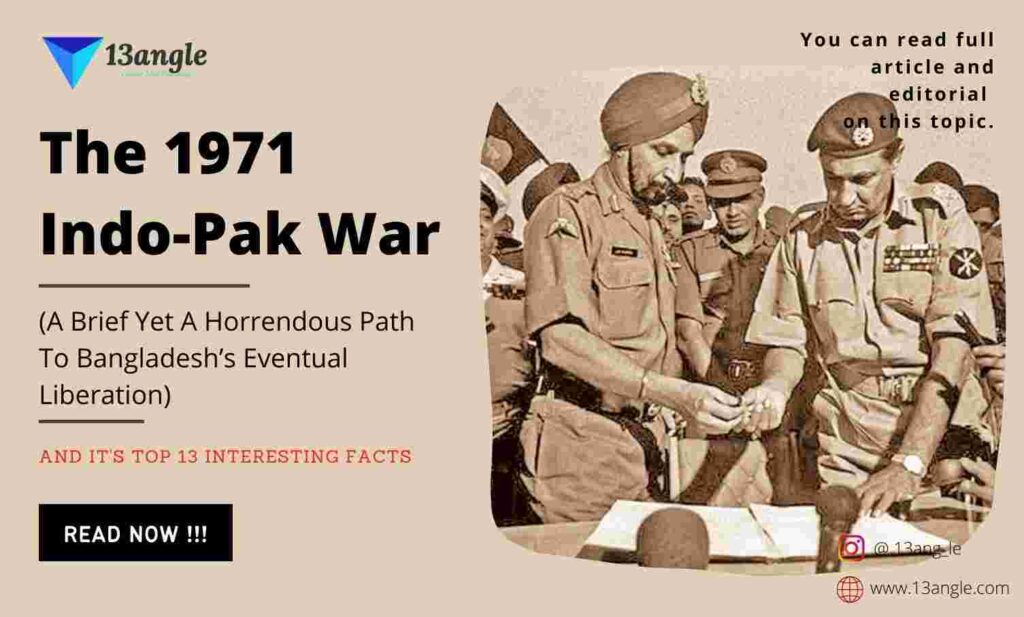USA and India shared quite a patchy bond ever since India wore the crown of independence in 1947. It went on heating till the beginning of the 1971 Indo- Pak war which mainly surfaced due to certain differences that existed between these two countries as, conflicting foreign policy goals, perspectives, ambitions etc. USA grew suspicious of India’s stance on bilateralism ever since India chose to stay non- aligned on the matter of USA’s foreign policy which prioritized the prevention of communism and creation of blocs of military allies to prevent the advancement of communism, in which India had least interests. For this matter, India had long been the champion of the ‘non- alignment policy’ and had remained officially non- aligned. Although India had its own reasons to choose the ‘non- alignment’ wave to ride on, it definitely earned USA’s distaste and criticism for its stance. Though an ‘ally’ phase came in US and India’s relationship during the 1962 Indo- Tibetan war when the US provided military and diplomatic aid to India to counter Chinese aggression. The US had clear strategies to hold India within its circles and prevent it from getting distracted towards Soviet and Chinese sphere of influence to majorly distance India and the other South Asian countries from maintaining communist governments. India being a considerably large democratic country was strategically and otherwise also much crucial to US’s long- term interests.
Although the ‘bitterness’ in US and India’s relations soon followed the newly thriving US- Pak relations. Since the very beginning of the cold war, the US had been on its mission to pick his allies from the Asia to contain Soviet Union and China. Although by than US had no evils for India, but due to US’s resorting to Pakistan as India had been maintaining a tough non-alignment policy and its decision to distance from any military alliances eventually filled roughness in US towards India’s firm stance on non- alliance. Pakistan’s geographical location, its proximity to China and its footing below Russia bore a significant number of benefits to US and it was ready to help its new Asian ally with financial and military aids.
By the time the 1971 Indo- Pak war hit the grounds, India- Us relations deteriorated to extreme levels and besides some decent commonalities that these two countries would share back then on the grounds of Democratic values, basic human rights they slipped into the enmity pot eventually. The soul of India- US relations breathed fragility from the divergent perspectives, foreign policy goals, perspectives and, interests. And with such significant differences in stances, India and Us went in the opposite directions, while India sided with the Awami league leaders of East Pakistan, US crucially supported the government of Pakistan during the Pakistan’s internal heavy tussle. India spent enough time to convince the US to intervene into the matter and work towards bringing the much-needed resolve to the dire situation of East Pakistanis. But US didn’t budge an inch and cornered India’s urgent request by excusing it as, US won’t interfere in any country’s internal conflicts. By then US had found the most compatible ally in Pakistan as a route to its new China initiative.
The East- Pakistani turmoil came across at a time when the ‘Nixon Administration’ of US was released on a fresh course of developing a new power equation in Asia with its popular idea of US-China-Pakistan at its heart. US had an ideal candidate in Pakistan to bridge the gap with China and to get its contact intact with the Chinese leaders when USA and China had no virtual relations as such. US afterwards became stone to any Pakistan government’s brutalities on East Pakistanis as it was busy protecting its much more prioritised new China initiative so, US didn’t necessarily intervened in the Pakistan’s chaos and raised no fingers on Pakistan’s President Yahya’s ruthless killing of East Pakistanis and didn’t care to pressurize Yahya to take necessary steps to reach to some political resolve to end the brutal battle between the Pakistani’s government and the Awami League’s people. Although many US ambassadors and people in the administration expressed their utter disgust at Pakistan’s inhumane handling of the East Pakistanis, such as the US Consulate General in Dhaka spoke heavily about the atrocities committed by the West Pakistan Army in East Bengal. US Ambassador to India, Kenneth Keating also expressed his utter disgust and shock over Pakistani army’s brutal suppression of Bengali people with the use of US military equipment. The US Embassy in Islamabad also expressed its sense of horror and anger at the Pakistani Army’s insane thrashing of the East Pakistani people. Though besides all this, president Nixon and his NSC team gave no damns to that and rather opted to stay mum about the whole matter.






